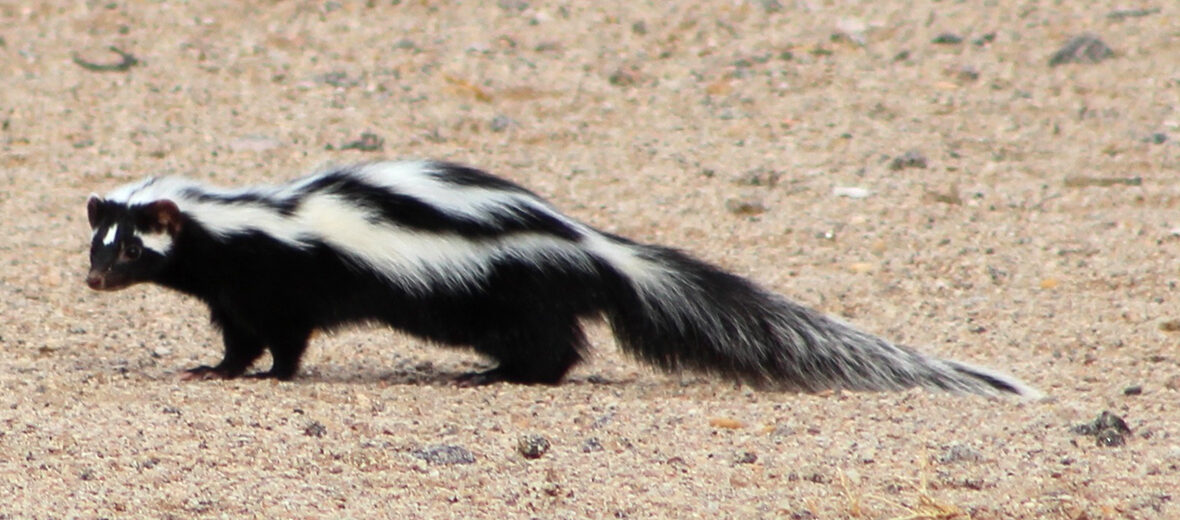
The striped polecat, aka African polecat, African skunk, Cape polecat, zoril, zorille, and zorilla, not only resembles a skunk but also has some of the same defenses. These critters can be found throughout much of Africa. They prefer dry and arid habitats such as the savannahs and the open countrysides of Central, Southern, and sub-Saharan Africa. They may face the threats of hunting; trapping; and invasive species, and with them diseases and predation, but they are abundant with a stable population trend. The IUCN lists these critters as Least Concern.
First the Stats…
Scientific name: Ictonyx striatus
Weight: Up to 2.9 lbs.
Length: Up to 28 inches, including their tail
Lifespan: Up to 14 years
Now on to the Facts!
1.) Their common name “zorilla” hails from the Spanish word “zorillo”, meaning “skunk”.
2.) The coloration of these critters is thought to serve as a warning to potential predators.
3.) They possess 34 sharp teeth that are used for tearing apart flesh.
4.) Various rodents, snakes, amphibians, birds, and insects are all on the menu.
5.) Due to the fact that they have small stomachs, they need to eat frequently.
But wait, there’s more on the striped polecat!
6.) These critters are solitary and only come together to mate.
7.) Striped polecats are nocturnal (active at night).
Did you know…?
The striped polecat is aggressive and extremely territorial. It marks its territory with its feces and via an anal spray; similar to a skunk.
8.) They are often found in habitats containing large ungulate populations, due of the lower level of shrubs where those grazers live.
9.) Females undergo up to a 4 week gestation (pregnancy) that yields up to 5 kits.
10.) The female protects her kits until they are able to fend for themselves.
But wait, there’s still more on the striped polecat!
11.) Their spray is released by anal stink glands which temporarily blinds their foes and irritates the mucous membranes, which results in an incredible burning pain.
12.) Before they spray their opponent, they take up a deimatic (threat) stance with their back arched, rear end facing their opponent, and with the tail held straight up in the air.
Did you know…?
Besides a variety of diseases, these polecats are also afflicted with ectoparasites, like fleas, ticks, and more. They are also plagued by endoparasites, like Cestodes such as Taenia tenuicollis and T. martis, and nematodes like Molineus patens, Strongyloides papillosus, Capilliaria putorii, and more.
13.) Communication with each other consists of a host of calls and verbal signals.
14.) They tend to emit a high-pitched scream just before spraying their opponent.
15.) Some of the diseases these polecats can get are distemper, the common cold, influenza, rabies, leptospirosis, and more.
Now a Short Striped Polecat Video!
Be sure to share & comment below! Also, check out the Critter Science YouTube channel. Videos added regularly!
Want to suggest a critter for me to write about? Let me know here.
Some source material acquired from: Wikipedia & IUCN
Photo credit: iNaturalist



